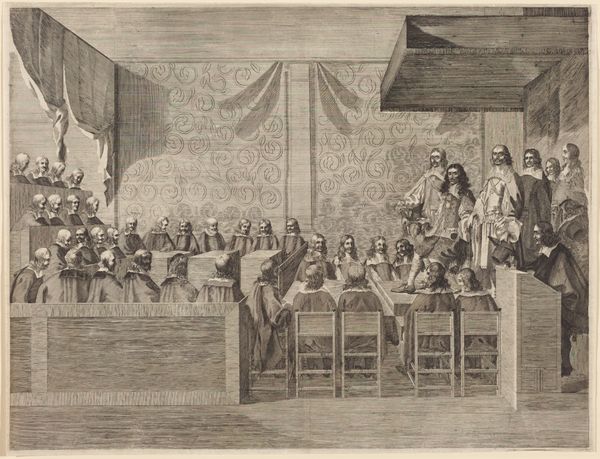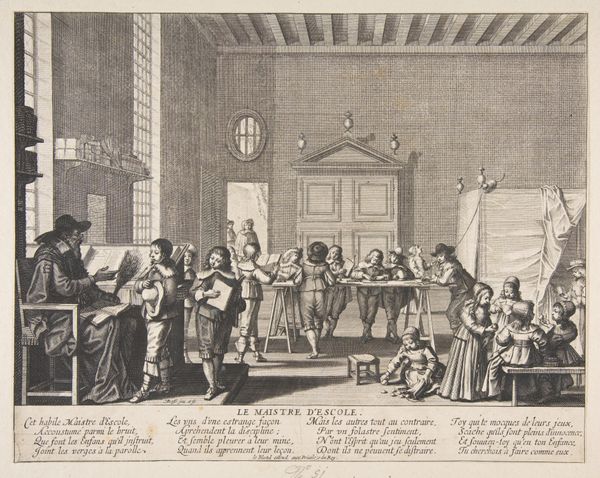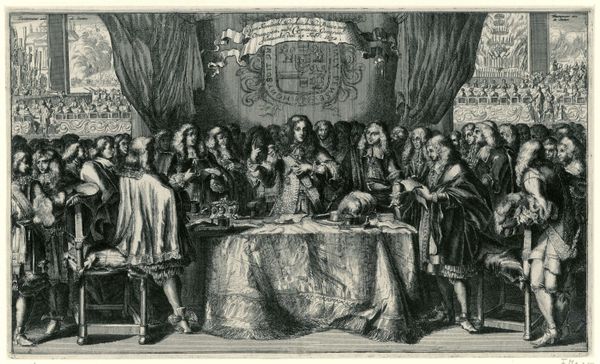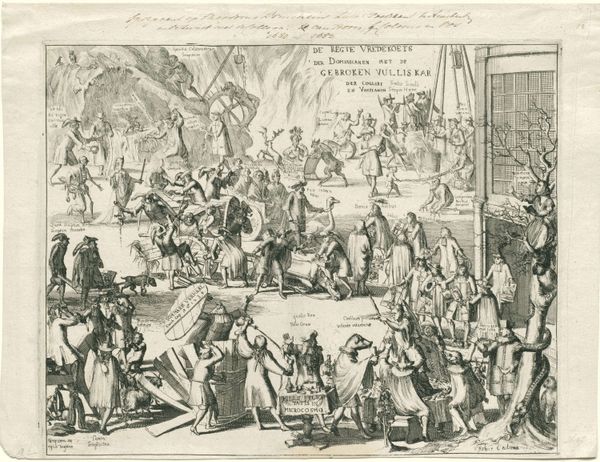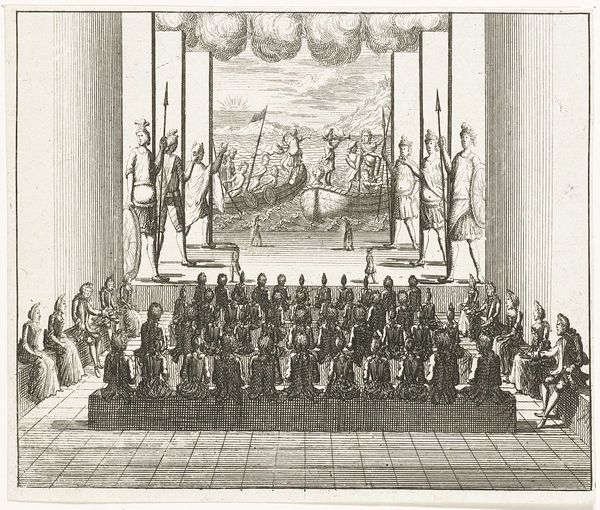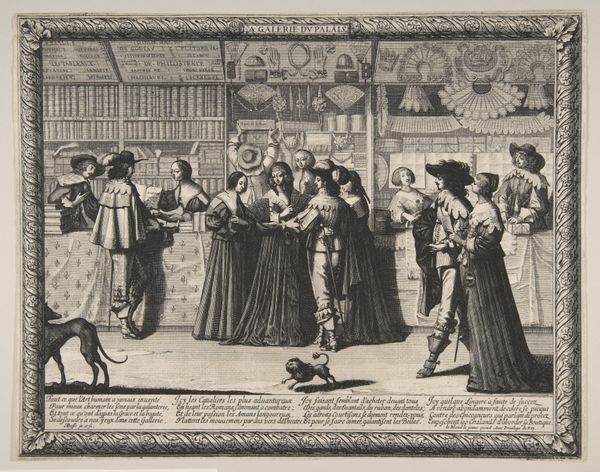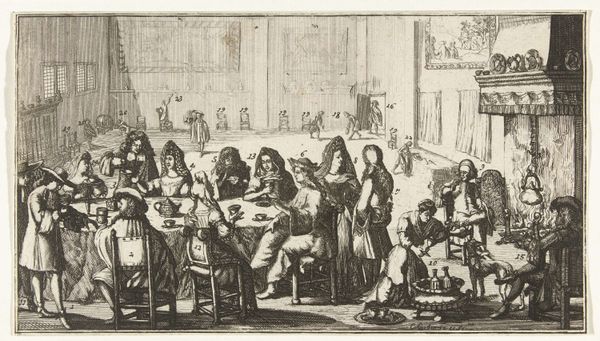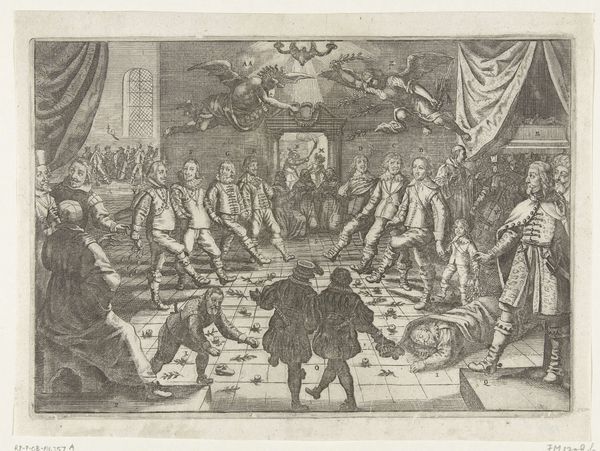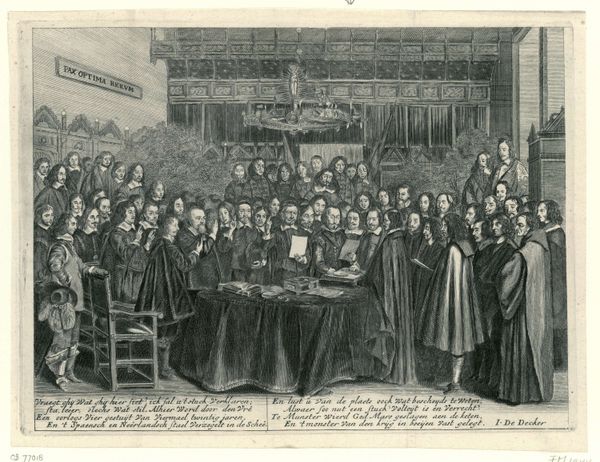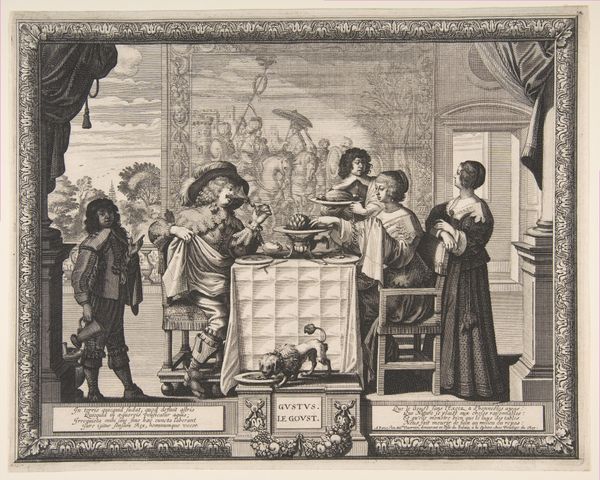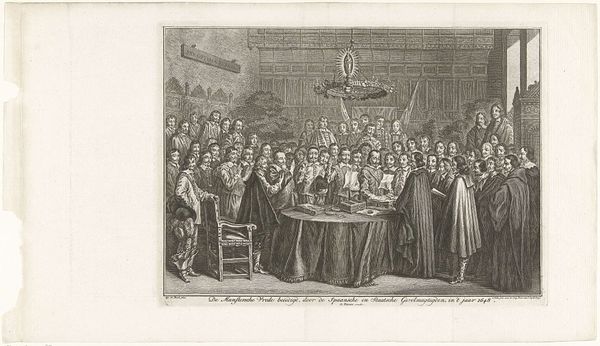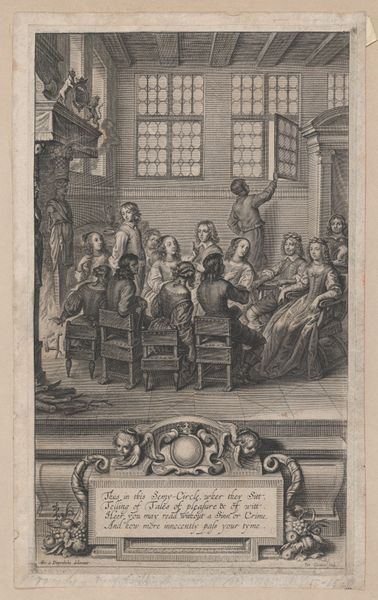
print, engraving
#
baroque
# print
#
line
#
genre-painting
#
history-painting
#
engraving
Dimensions: 106 mm (height) x 125 mm (width) (bladmaal)
Curator: Let's delve into "Et taffel," a Baroque-style print made sometime between 1650 and 1699. Its anonymous creator rendered this genre and history painting as a detailed line engraving. What are your initial thoughts? Editor: I’m struck by the stark formality of the scene, despite it depicting a supposedly social event. There’s almost an oppressive feeling within that tightly framed dining room. It hints at rigid societal expectations. Curator: Absolutely. The composition itself—the linear arrangement of the diners, the repetitive candles, the ordered drapery—conveys a deep-seated desire for control and order characteristic of the period. We see tables heavy with food, evoking abundance, a symbol often associated with power and the ruling class. The almost eerie number of candles, too, amplifies this symbolic power. Editor: And note how everyone is turned towards the figures standing prominently in the foreground. It feels less like a genuine shared meal and more like a staged performance of wealth and status. Who is permitted to dine at this table, and who is excluded? Even the gaze of the dog under the table contributes to that subtle sense of pressure. Curator: Yes! Consider the dog—a symbol of loyalty, often representing fidelity to the master or to the social order. Its inclusion reinforces the expectations and symbolic duties in the scene. Furthermore, look at how these lines converge, directing our attention from the edges inward, focusing it on a centralized display of social hierarchy through posture and interaction. Editor: This reading feels right. There’s so much implicit control here. It isn't just about observing a meal but scrutinizing how each person adheres to the unspoken rules, making sure they align perfectly. That, in turn, forces us to acknowledge a sharp delineation between observer and participant. Curator: I see that. Perhaps that contrast speaks to the role of these symbolic images to remind both observer and observed of societal positions and acceptable behaviors. Even something as seemingly innocuous as a shared meal becomes loaded with meaning. Editor: It reminds us to look beyond the immediate aesthetics and probe the power dynamics that underlie social rituals. Curator: Precisely. This close look enriches our understanding of the intricate web of symbolic power in 17th-century social life. Editor: It highlights art's role not just in depicting reality but also in actively constructing it.
Comments
No comments
Be the first to comment and join the conversation on the ultimate creative platform.
